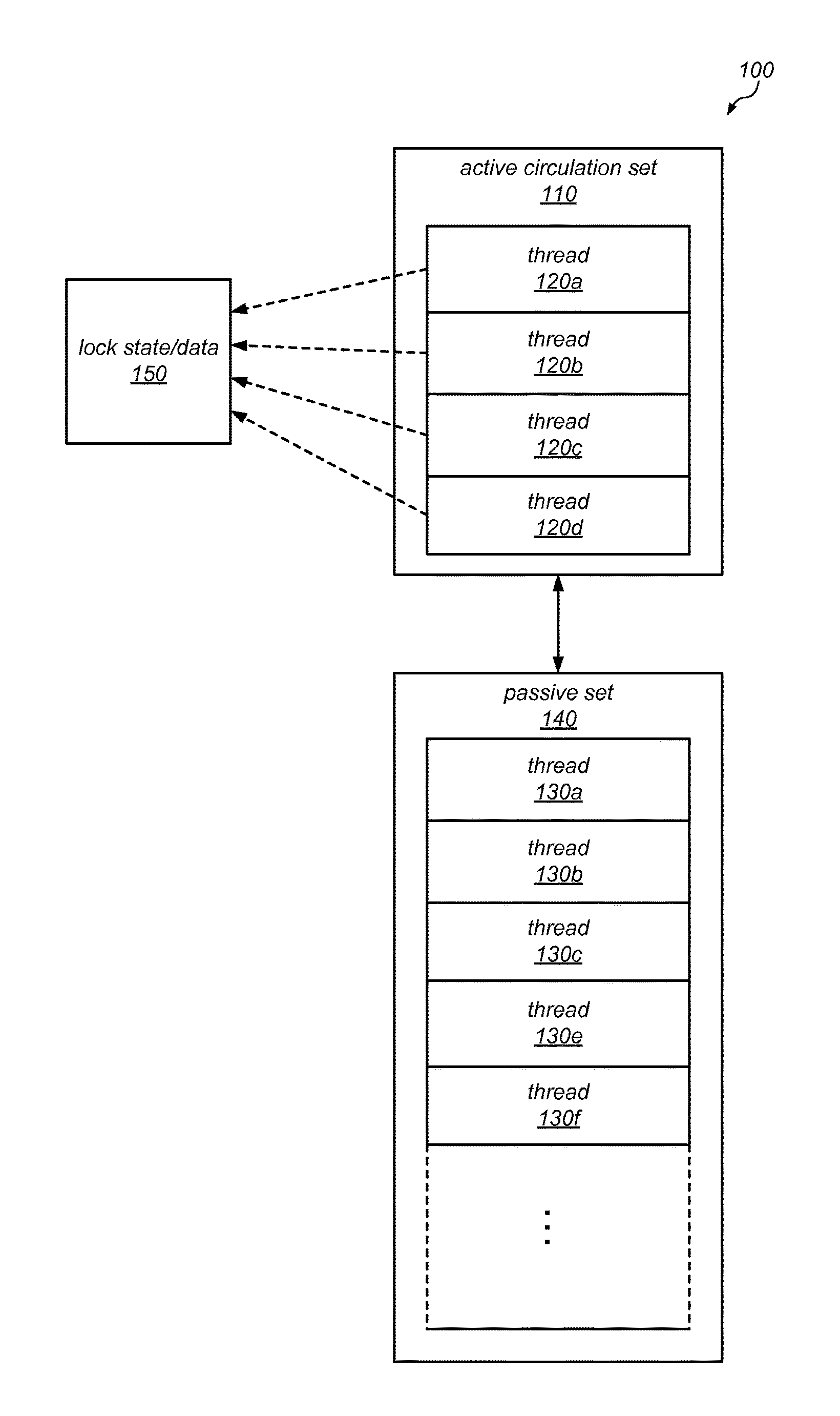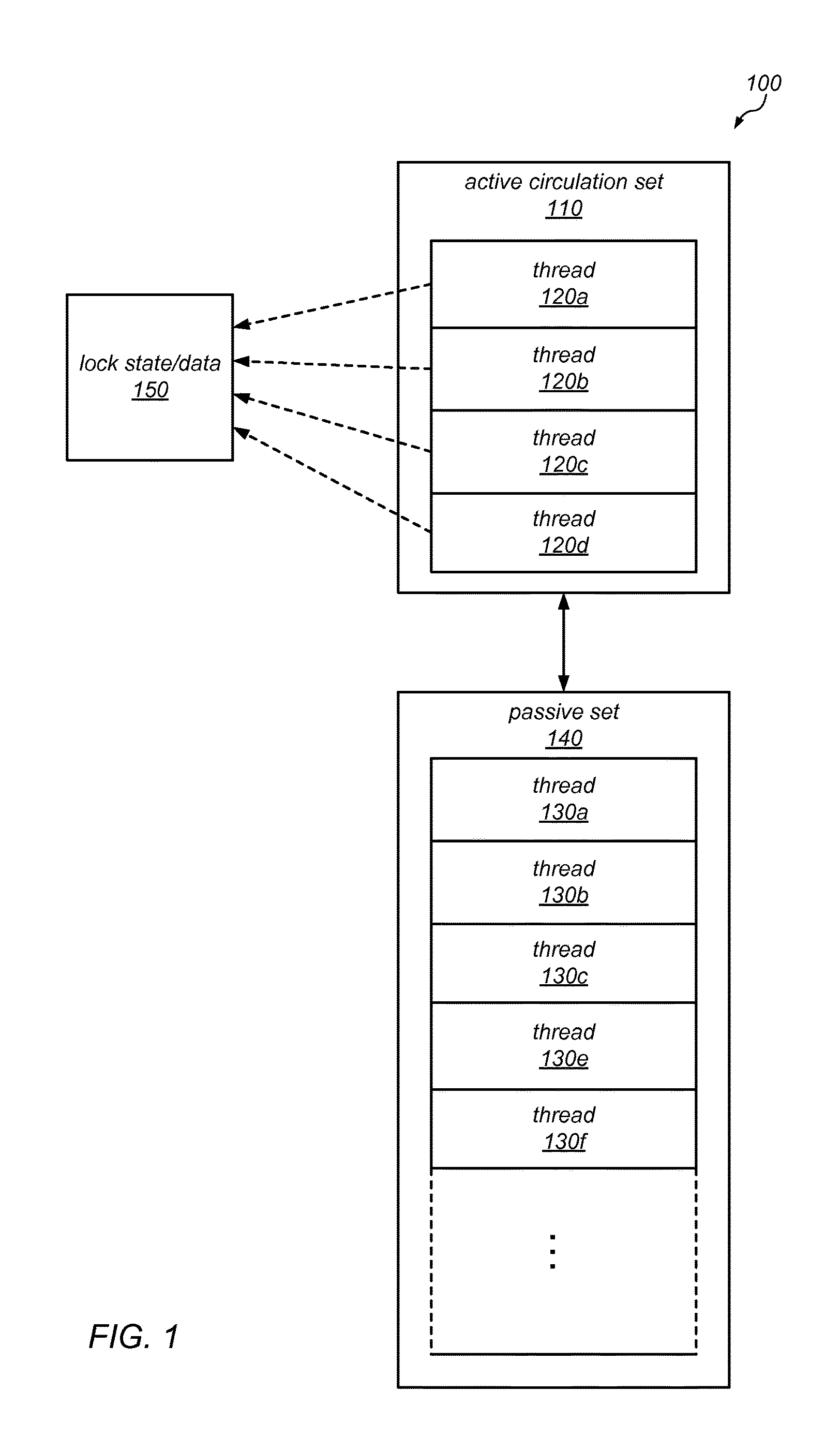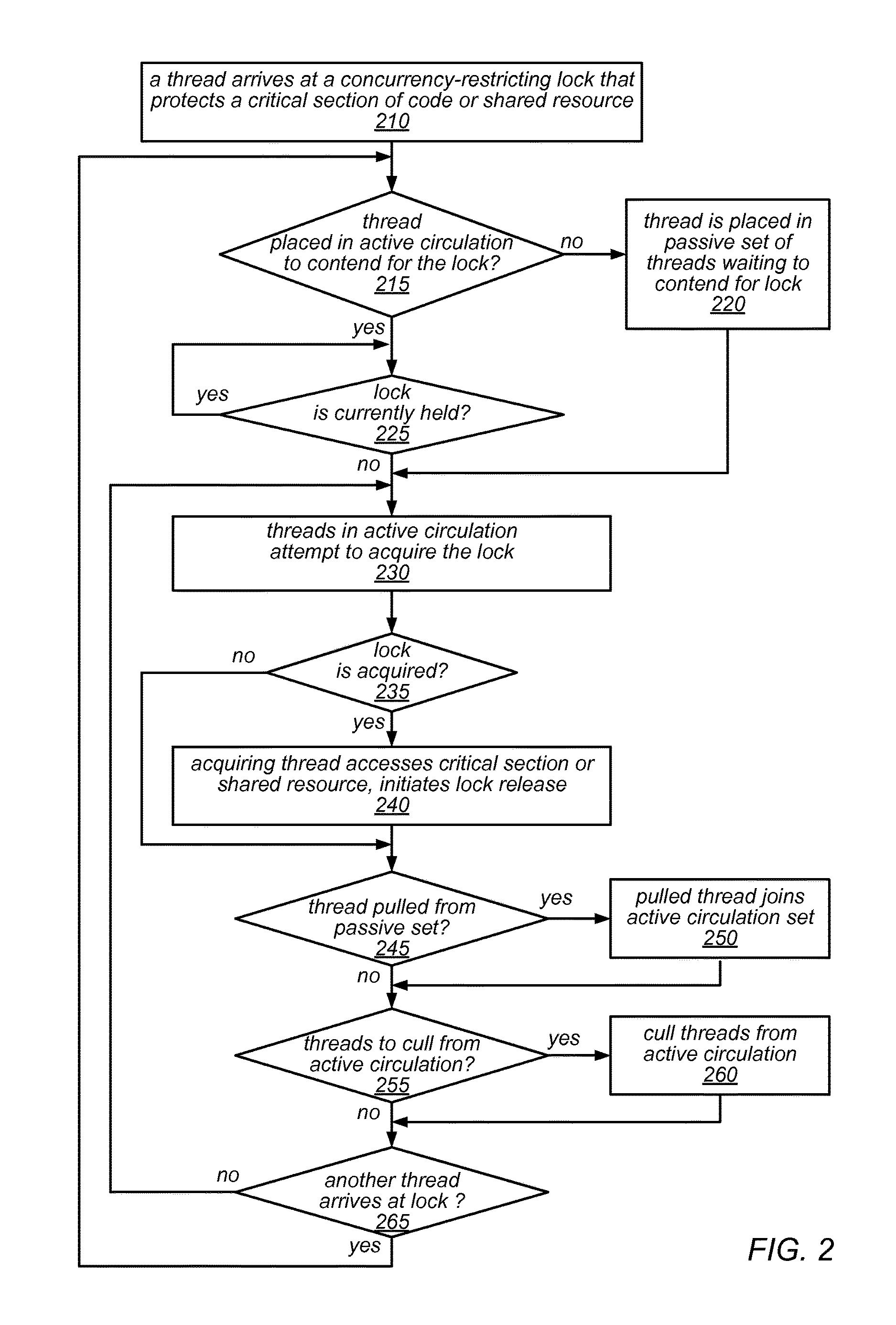Systems and Methods for Performing Concurrency Restriction and Throttling over Contended Locks
a technology of concurrency restriction and throttling, applied in the direction of multi-programming arrangements, program control, instruments, etc., can solve the problems of scaling collapse, performance drop, and difficulty in determining a reasonable limit on thread coun
- Summary
- Abstract
- Description
- Claims
- Application Information
AI Technical Summary
Benefits of technology
Problems solved by technology
Method used
Image
Examples
Embodiment Construction
[0024]As noted above, as multicore applications mature, developers may face situations in which there are too many threads for the available hardware resources to be able to handle effectively and / or fairly. For example, this may been the case in component-based applications that employ thread pools. Often, such components have contended locks. In some embodiments of the systems described herein, concurrency-restricting modifications to those locks may be leveraged to restrict the number of threads in circulation, thus reducing destructive interference (e.g., in last-level shared caches, or for other types of shared resources).
[0025]For example, in some cases, a contended lock that protects and / or controls access to a critical section of code (CS) or shared resource may have an excessive number of threads circulating through the contended lock. In this context, the term “excessive” may refer to a situation in which there are more than enough threads circulating over the lock to keep...
PUM
 Login to View More
Login to View More Abstract
Description
Claims
Application Information
 Login to View More
Login to View More - R&D
- Intellectual Property
- Life Sciences
- Materials
- Tech Scout
- Unparalleled Data Quality
- Higher Quality Content
- 60% Fewer Hallucinations
Browse by: Latest US Patents, China's latest patents, Technical Efficacy Thesaurus, Application Domain, Technology Topic, Popular Technical Reports.
© 2025 PatSnap. All rights reserved.Legal|Privacy policy|Modern Slavery Act Transparency Statement|Sitemap|About US| Contact US: help@patsnap.com



